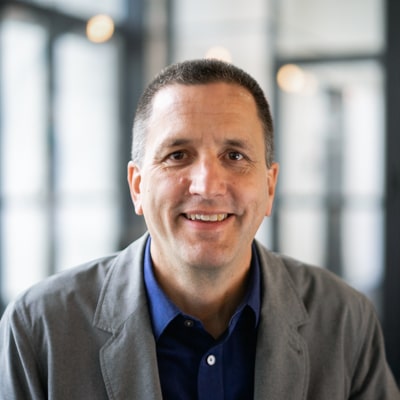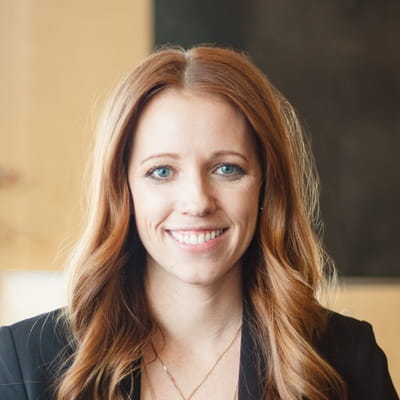UX Feeds Billions
Connecting & simplifying farm management
We've been a long term partner with a large machine manufacturer’s efforts to create meaningful software solutions for farmers. One of the biggest projects that we’ve tackled with them is an effort to create a platform that helps growers best utilize technology in their farming operation. Our client’s basic goal is to sell more machines—but to do that they need to help make their customer’s job easier, and that extends beyond the inside of the tractor cab. It’s a challenge that impacts the world.
A global challenge
Increase food production
It’s been widely reported that by 2050, agriculture will need to produce twice as much food to support Earth’s population—pressure is mounting to produce more with less. What would it look like if every seed put in the ground made it to the table? To give you some perspective, if yields of 16 important food and feed crops were brought within 95% of their potential, global food production would increase by 58%.
Now that’s something to chew on.
How can a connected farm application help feed the world?
Reduce waste
Today, 40% of all food grown is wasted. A large share of this waste is due to poor supply chain management. Bad timing or harvesting in unfavorable conditions, inadequate storage, and lack of marketing all contribute to yield loss.Protect land
Agriculture makes up 38% of land use on the planet, yet 1 billion people (that’s one in seven people) are still chronically malnourished. The numbers don’t add up, and consuming other precious ecosystems (like the rainforest) isn’t the answer.Conserve resources
Many growers struggle with the Goldilocks problem—applying too much or too little (chemical, water, etc.), but never getting it just right. Both issues, under and overuse, have serious environmental implications. Without finding balance, we will continue to pollute our water and waste the limited amount we have left.Close the gaps
If we could reduce the yield gaps by 50% in Africa, Asia and Eastern Europe, we could feed an estimated 850 million additional people. Rather than just dumping resources into the land, sustainable intensification is needed.The big data problem
Over the years, machine manufacturers have been working hard to improve data collection in order to increase yields and efficiency. Precise numbers and measurements are delivered to farm managers throughout the day, and in theory, this should give producers what they need to make timely and informed decisions. However, we’re seeing that increased data from multiple sources (machine and in-field hardware data) isn’t doing much good. It’s fragmented and unconducive to analysis. The problem is exacerbated as farms get bigger to accommodate the demands of a growing population; a bigger farm means sifting through more data. Without a way to bring it all together—or at least a common platform for collaboration between tools—the gift of all this data goes unappreciated and unused.
"In the last 25 years, we’ve seen field and farm data triple, but it’s not helping most growers. Overwhelmingly, they are confused and paralyzed by the mountain of papers each season brings."
How it all comes together
Delivering real-time information
The platform we helped design is an ambitious, collaborative application that syncs farm activities to managers and trusted advisors who help growers maximize yield potential and decrease waste (resources and crop). When everyone in the supply chain can monitor and track crop logistics, less food is lost to improper storage and poor market planning. Additionally, use of shared cloud computing allows for continuous communication between machine and office. It eliminates the need for farm managers to be onsite during machine setup and lets operators receive work instructions remotely. That’s a huge time-saver.
Enabling efficient practices
Beyond monitoring, logistics and tracking, we are helping growers build more efficient cropping practices. The overuse of chemicals and water is destructive and impractical—not to mention expensive. Better soil, nutrient, and water management and analysis are key to discovering the “just right” amount—of seed, fertilizer, irrigation, pesticides, etc.— to improve yield without expanding agriculture’s environmental footprint. It’s vital to know what was planned, what was put in the ground, and what was produced to uncover flaws in practice which result in waste. We’ve designed solutions for analyzing land management decisions from past and present seasons, and we’ve built planning tools which utilize that analysis for future seasons.
"Every farm is different, but every farm is also a little bit the same. No matter where we go—Australia, Iowa, or Texas—we have found that data-based decisions and collaboration are imperative to a grower’s success."
Data-informed decisions lead to a better tomorrow
Our efforts have not been based on mere hunches as to what we think will improve agricultural production and logistics. We’ve traveled to 24 states, six countries, and met with over 150 people to ensure our strategic vision and goals align with the transforming industry. Building software of this magnitude is a process, but our customer visits and testing have shown that we’re successfully working towards a better tomorrow. Our Net Promoter Score (NPS) has consistently been above the industry average, and we’re exceeding expectations daily. There is momentum building, and our solutions keep growers excited about their future.






150
Growers & Dealers
6
Countries
25
States
"By going out and talking to growers, we’re seeing first-hand not just how they interact with our system, but how it fits into a farm’s entire ecosystem. Farming is so much more complicated than people realize, and we’re helping growers manage that complexity efficiently."
Relationships don't start with a contract.
From general UX questions to project inquires,
let's start a conversation.


